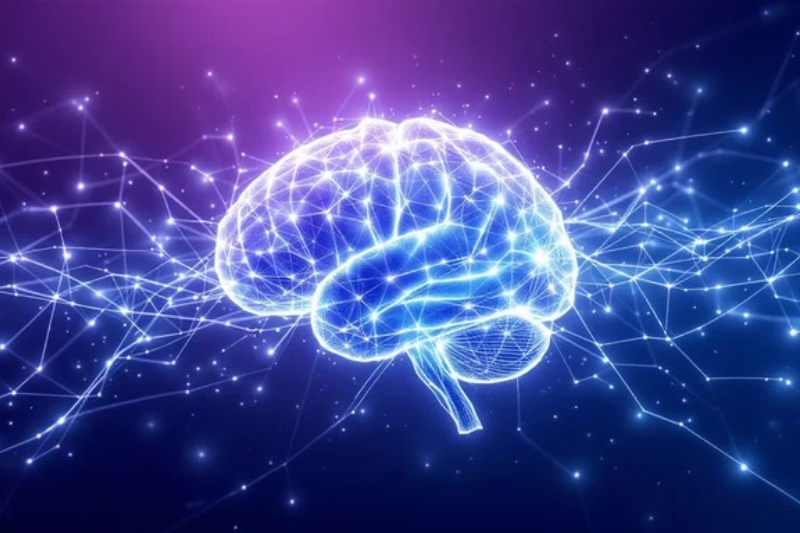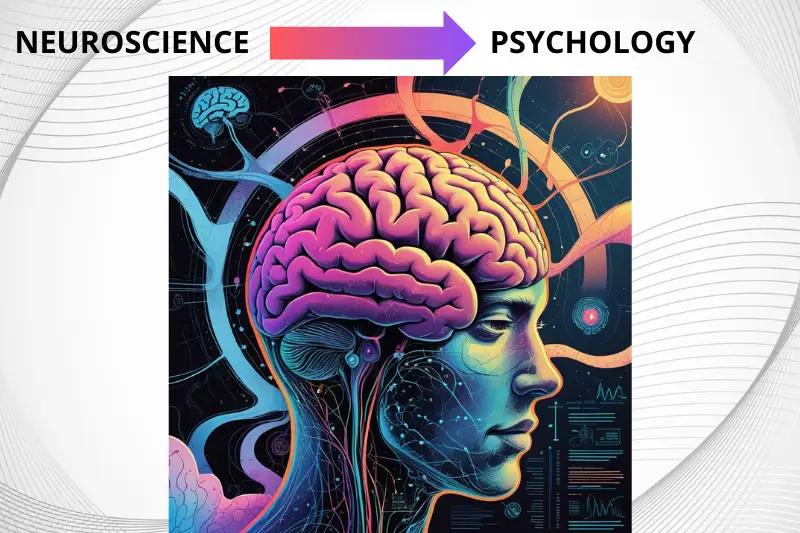At the heart of personality and identity lies who we are. They explain who we are and how we are seen by everyone who is not us, the guide of our life. But that which contrives these intricate, intimate constructs lies behind them. Neuroscience of personality and identity Over the past few years, breakthroughs in neuroscience have indicated that personality and identity are more than just psychological constructs; they are constructed in the biological structures of the brain. The neuroscience of personality and identity reveals a wealth of knowledge about individual human beings, and also about some aspects of our mental health.
THE DEFINITION OF PERSONALITY AND IDENTITY
Personality has to do with the patterns of thought, emotion, and behavior which differ between people. That includes extroversion, conscientiousness, openness to experience, and emotional stability. However, identity is much more multifaceted. This encompasses aspects of self-concept, social roles, culture, values, and the story that we tell ourselves about our own lives.
While personality is often thought to remain constant across time, identity is more fluid, depending on experiences and relationships, and life stage. Neuroscience is slowly parting the veil on how both are created, sustained, and changed in the brain.
Brain Structures Related to Personality
Personality traits are influenced by various interconnected regions of the brain, and this interaction forms the basis of an individual behavioral tendencies. Key areas include:
Amygdala: A structure associated with emotions, such as neuroticism and fearfulness. Increased activity in the amygdala may predispose people to anxiety and emotional reactivity.
Anterior Cingulate Cortex (ACC)**: Integrates cognitive and emotional information. It is associated with empathy, error detection, and self-monitoring processes that contribute to agreeableness and conscientiousness.
Default Mode Network (or DMN) : A network active during introspection, self-referential thought, and autobiographical memory including medial PFC, posterior cingulate cortex — and angular gyrus This is believed to be a key factor in the formation of self-concept and identity.
Neuroimaging studies have found some associations between certain types of brain structure and certain personality traits. Higher openness to experience has been associated with greater connectivity in the DMN, whereas extroversion has shown to be related to medial orbitofrontal cortex volume, a reward related region (Hare et al., 2009; Huang et al., 2012).
THE CHARACTERISTICS OF PRSONALITYGenetics and personality.
The typical understanding of personality is they are dictated by genetic and environmental factors. Twin and family studies have estimated the heritability of personality traits to be around 40–60%. Recent genomic discoveries have illuminated particular genes related to neurotransmitter systems (e.g., dopamine, serotonin) that influence traits (e.g., impulsivity, sociability, mood regulation).
But, there is not a messenger centromere that is the “personality gene.” Instead, personality comes from an interplay of diverse genes with the environment, where many genes may contribute small effects, and the total effect manifests as a behavioral tendency.’Full of emotions: from gene to personality. Epigenetic alterations (changes in how genes are expressed rather than their sequence), which are influenced by environmental conditions, have key effects, particularly during early development and critical periods of the life-course.
Development & Plasticity
Some of these characteristics are evident in infancy but personality gradually matures throughout life. While we know from numerous studies that childhood temperament is often a predictor of adult personality, experiences, social factors, and life circumstances quickly meld and hone the shape of the growing human. This adaptability is supported by brain plasticity, the structural and functional changes that occur in the brain.
Trauma or chronic stress, for instance, can result in long-lasting changes to brain circuits that govern emotion regulation and social behavior. On the other hand, therapy, mindfulness, and education can alter neural pathways and change how the brain functions, which could promote personality development—or change.
Identity as the Narrative or Story Self
No surprise, then, that we also connect identity to the idea of the narrative self: the story we share with ourselves about who we are, where we come from and where we are headed in life. This narrative is perpetually being written as new experiences create a new self.
Neuroscientific studies indicate this story is mediated by areas [in the brain] like the medial prefrontal cortex and the posterior cingulate cortex. These areas are involved in self-related thinking and the recollection of personal memories, both processes that play a fundamental role in interpreting our lives and supporting a consistent self-concept over time.
Moreover, identity is social. Just how we know ourselves and our identities depend on the types of relationships we have with people, and the function or role we play in our different communities. The perspective-taking and social cognition areas in the temporoparietal junction and superior temporal sulcus — where we can understand others and see ourselves through their eyes. They inform the social aspects of identity, based on things like sex, tribe, occupation, and culture.
Personality and Identity Disorders
Interruption of personality and identity related brain circuits can have quite deep effects. Personality disorders include borderline personality disorder or antisocial personality disorder, he says, and consist of persistent maladaptive thinking, feeling, and behaving. Abnormalities of the prefrontal cortex (PFC), amygdala, and other emotion-regulating regions have been found in several neuroimaging studies of these disorders.
In a state such as dissociative identity disorder (DID) or depersonalization disorder, there is a fracture of the sense of self. The neurobiology underlying these disorders remains unclear, but differences in function in brain regions important in self-awareness, memory, and emotion have been identified.
Identification and Personality Neurodegenerative diseases such as Alzheimer’s disease can also modify identity and individuality. So the brain structures decay, and people disappear in a way, right? They lose the self-orientation, forget their life history, they act in ways that seem so alien to what they were, and so on. This highlights just how important the brain is to being who we are.
Culture & Environment
Personality and identity are hereditary in the cell of bones, but they reside in culture and in the environment, dwelling over a bed of biological foundation offered primarily by the brain. Cultural values shape what traits are highlighted or shunned, how identity is cultivated, and how people make sense of their lives.
Collectivist cultures, for instance, might encourage interdependent self-construals, a way of being in which identity is intricately intertwined with family and community. On the other hand, in an individualistic culture, people are more likely to seek independence and personal success. Correspondingly, neural processing is likewise a reflection of these cultural orientations. Previous research has shown that thinking of oneself activates different areas of the brain than thinking of others, but cultural differences in the brain activation patterns associated with self-referential thinking had not yet been explored.
Brain development and personality get imprinted by early experiences, parenting strategies, education and social economic status. The cascade of effects from chronic adversity — neglect, and abuse — changes both stress-response systems and networks involved in emotion-regulation, with long-term consequences for personality development and identity formation.
Technology and Personality Neuroscience — Past, Present, and Future
With advancements in our neuroimaging technologies, we feel we are getting closer and closer to grasping the true nature of our personality and our identity. By means of functional MRI (fMRI), diffusion tensor imaging (DTI), and real-time brain mapping, tools are offering researchers increasingly precise and detailed prospects into the neural foundation for individual variances.
It is fancy that AI and ML are being used to analyze huge datasets that show how billions of data points might be tied to combinations of brain structure and function, along with distinct personality profiles. This could eventually pave the way for individualized mental health interventions, designed based on a person´s unique brain or personality traits.
The impact of social media, virtual reality, and AI-infused interfaces on personality and identity is also a rising area of interest. This begs the question: How has our increasing time spent in virtual space (where nearly everything we do is presented to an audience) changed our sense of self? And also — is our hardwired brain evolving to accommodate such experiences?
Ethical Considerations
Well, takes some imagination to see inside the brain and find components of personality — so, ethical question there. How do we safeguard the privacy of the individual? Shivaram Mysore: Are neural profiles something employers/schools should consider? Might brain-based assessments inadvertently lead to stereotypes or restrict possibilities?
Scientific advances have emerged faster than the ethical frameworks that are needed; there is no doubt that ethical frameworks need to evolve to prevent the misuse of scientific advances to impose control, discrimination or even punishment based on insights into personality and identity, and these issues need to be part of the solutions to the crisis. Top III guiding principles that guide transparency, informed consent, and a commitment to diversity and inclusion.
Conclusion
A glimpse under the hood of the human experience can be found in this examination of the neuroscience of personality and identity. By learning about the brain behind the mask we take a look at the biological and experiential forces that help create our sense of self. Until recently, personality traits were regarded as relatively fixed characteristics, but new research suggests that they arise from dynamic brain systems interacting with genes and environments. Identity also does not arise from itself but through the interaction of historical memory and culture, self-reflection, and social connection.
Far from diminishing our sense of self, neuroscience is likely to enrich our understanding of human variation, promote compassion for other modalities of existence, and lead to more efficacious interventions for mental health and human flourishing. The path to understanding the self is still far from complete but with each insight we create, the closer we inch to the crux of the mind and what means to be human.



